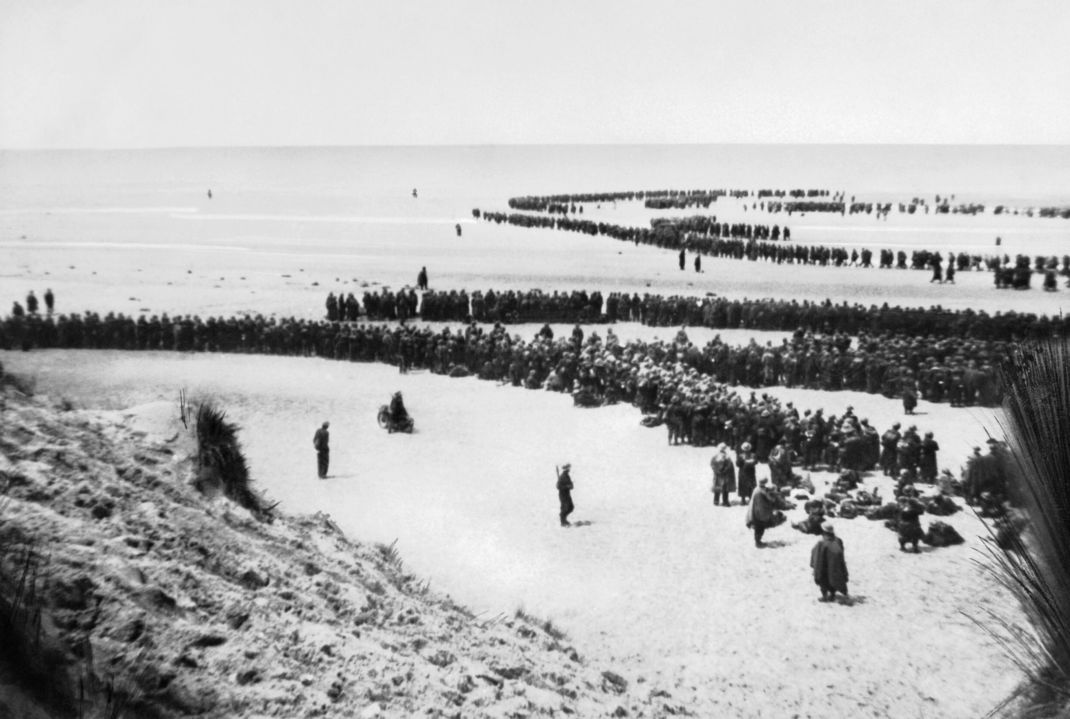Steps to TruRisk™ – 3: Get started with Business-Driven Risk Prioritization
“In preparing for battle, plans are useless, but planning is indispensable.” —Dwight D. Eisenhower
Prioritization wins battles. Preparation is the difference between a coordinated response and total chaos. Protecting what matters starts with identifying critical systems, understanding the impact, and securing them first.
A global manufacturing company learned this the hard way when ransomware struck. What began as a single vulnerability quickly spread, rapidly locking down systems and bringing operations to a standstill. As teams scrambled to patch and restore, unscathed systems remained exposed. Without a clear roadmap for what mattered most, the infection spread, and recovery efforts stalled.
- Production stopped. Shipments halted. Revenue-driving operations froze.
- Weeks of downtime. Millions in losses. Lasting reputational damage.
Determined to rewrite their story, the company launched a Business Impact Analysis (BIA) as part of a full Business Continuity and Disaster Recovery (BCDR) plan. Collaborating with leaders and stakeholders, they mapped key systems, critical assets, and their role in keeping the business running. Now, when the next crisis hits, the security and technical teams know exactly where to focus. What was once a public failure is now a blueprint for resilience.
A third installment in our Five-part Steps to TruRisk™ series, Step 3 is all about understanding what truly drives the business. When teams know what enables operations and makes the cash register ring, they know where to focus their attention, effort, and resources, ensuring maximum impact. Assessing business consequences provides clear direction.
Just as history has shown, success in battle and in cybersecurity depends on knowing what must be defended at all costs. With this knowledge, teams can cut through overwhelming chaos, turning data and insights into definitive, focused action.
If you haven’t yet explored previous steps in our Steps to TruRisk™ series, read now: Step 1 | Step 2
Steps to TruRisk™
Ready to take a deep dive into how to align risk with business priorities? Check out our exclusive webinar on Step 3 of the Steps to TruRisk™ series!
Holding the Line with Key Lessons in Strategic Prioritization
“There was no margin, no reserve. Everything was committed. The odds were great, our margins small. But by focusing our strength where it mattered, we turned the tide.” —Winston Churchill
In perilous moments, knowing where to focus is everything. Not all assets, systems, resources, and applications carry the same weight when it comes to risk. Some are fundamental to business survival, while others, though important, don’t have the same immediate impact if compromised.
In the summer of 1940, the United Kingdom found itself at a critical inflection point. France had all but fallen, and Germany’s confidence in a swift, total victory was high. In the chaos of Dunkirk, British leadership faced a decision that would shape the course of its future, not in terms of military dominance, but in strategic foresight. Faced with a stark trade-off, they made a bold call: prioritize people over physical assets. Equipment was left behind. What they saved was more vital: the trained personnel capable of driving recovery and shaping resilience.
This wasn’t simply a tactical retreat. It was an act of strategic clarity, a conscious prioritization of what would truly enable long-term capability. In modern enterprise terms, it was the equivalent of preserving the core competencies that fuel future operational continuity.


In the aftermath of Dunkirk, British leadership had recognized that resilience required more than a single strategy. It demanded a deliberate orchestration of every remaining asset with precision.
Leaders channeled investment into what mattered most, which meant areas of disproportionate impact. The Royal Navy safeguarded maritime channels, while the Royal Air Force’s revitalized air defense strategy focused on radar intelligence and a command structure known as the Dowding System. These weren’t just systems but multipliers, enabling agility and foresight under pressure. Through this prioritization, Britain retained its capacity to regroup and rebuild, setting the stage for future operations, not through sheer volume of resources, but through deliberate and mission-aligned investments.
And, the strategy worked. The RAF, bolstered by innovative radar intelligence and the Dowding System (more on this in Step 4), repelled the Luftwaffe, shifting the tide in the ‘Battle of Britain’.


Recognizing the pivotal role of the RAF pilots, Churchill would later encapsulate the gravity of this moment, observing, “Never in the field of human conflict was so much owed by so many to so few.” But even beyond the heroism, this was a powerful case study in resource discipline. The British response was not reactive but intentionally proactive. The defenders aligned capabilities with mission-critical priorities and made hard decisions about what not to protect, and what to prioritize.
This lesson translates directly to cybersecurity and risk prioritization.
In the digital era, organizations face similar trade-offs. Threats are persistent, resources are finite, and clarity is non-negotiable. Much like Britain’s coordinated defense, modern enterprises must apply an integrated approach; identifying the assets, systems, and teams that create business value and ensuring they are prioritized for protection. Knowing what to protect, and having the organizational discipline to follow through, is the linchpin of resilience. It’s not about defending everything; but about defending what matters most.
Just as Churchill’s decisive focus shifted the course of history, a well-prepared organization can withstand relentless threats by concentrating efforts and making every resource count.
Next, we’ll explore how organizations can adopt structured, risk-aligned frameworks to segment assets and systems by business impact, empowering smarter, faster prioritization decisions and amplifying the return on every cybersecurity investment.
Aligning Risk with Reality through Business Impact Analysis
Prioritization sets the stage, but effective risk management will require assigning systems and assets to impact levels. Since every organization operates differently, there is no one-size-fits-all approach. Security and business leaders must define and communicate their priorities clearly.
NIST provides some solid BIA frameworks with proven methodologies for determining asset value and integrating into overall security strategies, ensuring alignment with business objectives. To accurately reflect risk, consider the core principles of Confidentiality, Integrity, and Availability (CIA). These guide the identification of critical assets and the assessment of how disruptions impact operations.
This section will highlight the NIST IR 8286D report, which outlines the process for conducting a Business Impact Analysis (BIA).



Organizations worldwide rely on these frameworks to map their systems and assets, making it easier to assess how disruptions could impact operations.
Here’s the Business Impact (BIA) Level Breakdown:
| Level | Impact | Extent |
| 5 | Severe | Core infrastructure and revenue-generating systems. These include payment processors, mission-critical ERP systems, and industrial control systems. A breach here halts operations or causes catastrophic damage. |
| 4 | Significant | High-value systems that support core business operations but aren’t directly tied to critical processes, like CRM systems or key databases that support customer-facing functions. While an incident here won’t immediately halt core revenue generation, it still warrants high priority. |
| 3 | Moderate | Systems supporting less vital but still essential operations such as HR systems, internal collaboration tools, or non-essential customer support channels. These support operational continuity but have no direct connection to revenue generation. |
| 2 | Minor | Systems with limited disruption potential, such as internal reporting tools or non-production assets that don’t impact immediate operations. These are useful for daily operations but are not tied to business resilience. |
| 1 | Negligible | Non-essential assets that would cause little or no disruption to the business. These have no significant impact on operations or revenue. |
Starting with BIA Level 5 ensures teams can prioritize, while focusing on areas that could bring the business to its knees if compromised. Once these high-impact systems are grouped and secured, addressing lower-tiers becomes more manageable.
Good news: The Qualys Enterprise TruRisk™ platform maps to Business Impact Levels using the Asset Criticality Score (ACS) tagging feature, giving Security teams full control. ACS powers the TruRisk™ formula (TruRisk™ = QDS × ACS), aligning with the risk equation: Risk = Likelihood × Impact.
This empowers teams to unlock business-specific, prioritized workflows, making risk awareness a core part of a proactive, business-focused security strategy.
References: Calculating Asset Risk Score and Asset Details ACS, Exposure, Risk Factors.
Turning Impact into Action with Asset Criticality Scoring
Understanding asset criticality is the key to aligning security efforts with business priorities. Qualys makes this seamless by integrating Business Impact Levels (BIA) with Asset Criticality Scores (ACS), enabling risk-based prioritization without friction.
How it works:
Assign Business Impact Levels to assets and/or groups during tag creation. Automate impact classification and streamline prioritization, using manual or dynamic (rule-based) tagging.
Don’t wait, start here: Check out the video!
With clear impact awareness, teams can narrow their focus on what truly matters to the business. By mapping the Enterprise TruRisk platform to organizational impact, Cybersecurity teams’ group and prioritize efficiently, accelerating risk reduction, while ensuring mission-focused responses.
Explore more: VMDR Add Tags, Complete Tag List (Asset Inventory use cases), ACS Demo (4 minutes).
Key Step 3 Takeaways
- Preparation is Key: Identifying and prioritizing critical assets ensures that teams can focus on high-impact systems first, streamlining response efforts.
- Prioritization is Paramount: Using frameworks like those from NIST, assessing based on the principles of Confidentiality, Integrity, and Availability (CIA), and completing a Business Impact Analysis (BIA) will help guide business prioritization.
- TruRisk™ isn’t Far: Qualys integrates Business Impact Analysis levels with Tag-based Asset Criticality Scoring (ACS), enabling a proactive, business-driven security strategy that focuses on risk reduction.
Not all assets and systems are equally critical. Taking the time to assess, tag, and prioritize based on business impact ensures you are ready to repel attacks while protecting what matters most, even with limited resources. Just as Churchill’s success during WWII relied on strategic prioritization and a committed team, cybersecurity efforts must focus on defending the most vital, mission-critical assets first.
The tide does not turn on its own. It requires strategic preparation, effective tactics, and the right tools. Align security efforts with business priorities, ensuring defenses and responses are battle-ready for digital warfare.
If you’re not yet using VMDR to measure, communicate, and eliminate risk, we invite you to start a risk-free 30-day trial.
What’s Next?
A scattered defense wastes resources and exhausts people. A coordinated strategy ensures that every action reinforces the bigger picture, driving security and business success. Stay tuned for Step 4, Communicate Effectively: Track and Quantify Risk, which will pull everything together.
By helping you align strategy, communication and actions, Step 4 will demonstrate how you can transform insights into impactful decisions that directly support business goals. Using trusted frameworks, we’ll show you how to turn security efforts into a unified, top-down, focused approach, ensuring every move drives value. This step will guide you on how to use strategy, the Enterprise TruRisk™ platform, and a clear focus to maximize resilience while leading the charge to de-risk the business.
Special thanks from the Author to our Contributor/s:
Russ Sanderlin, VMDR Director and SME